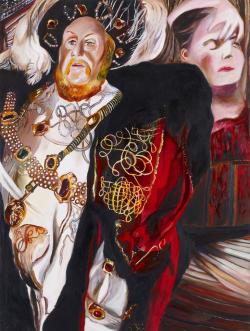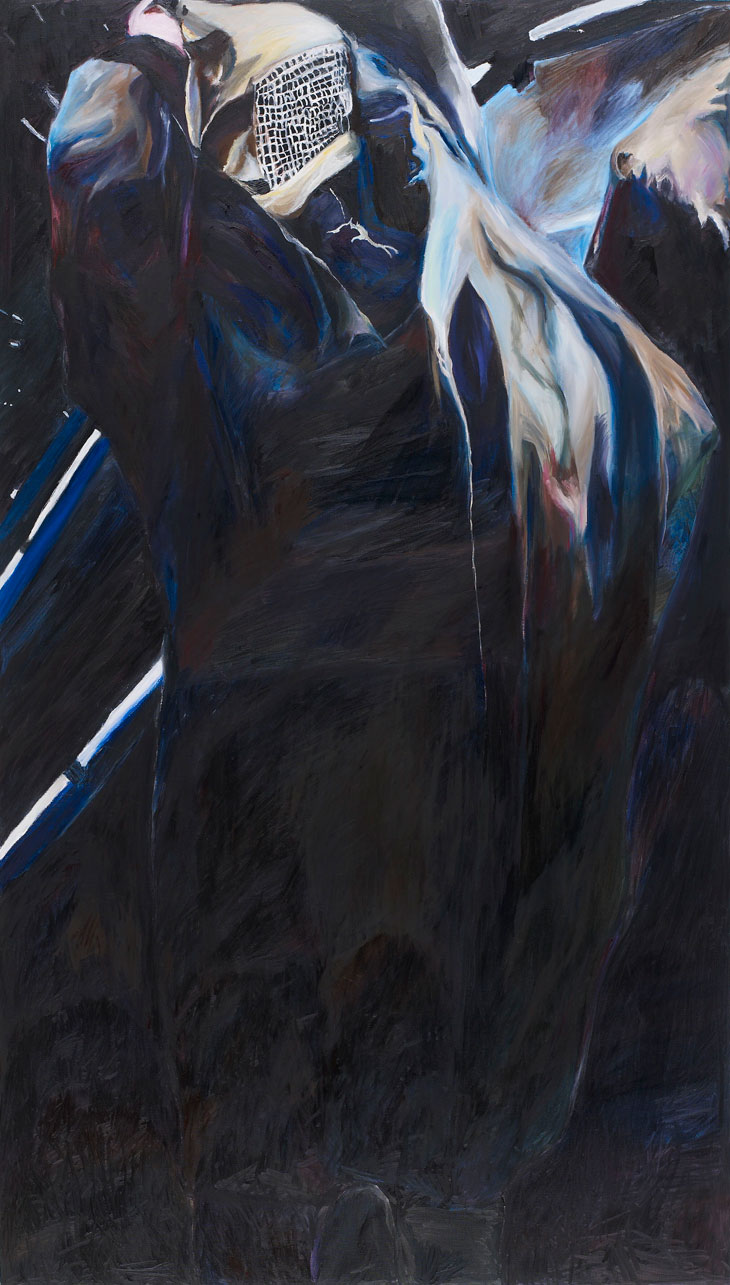


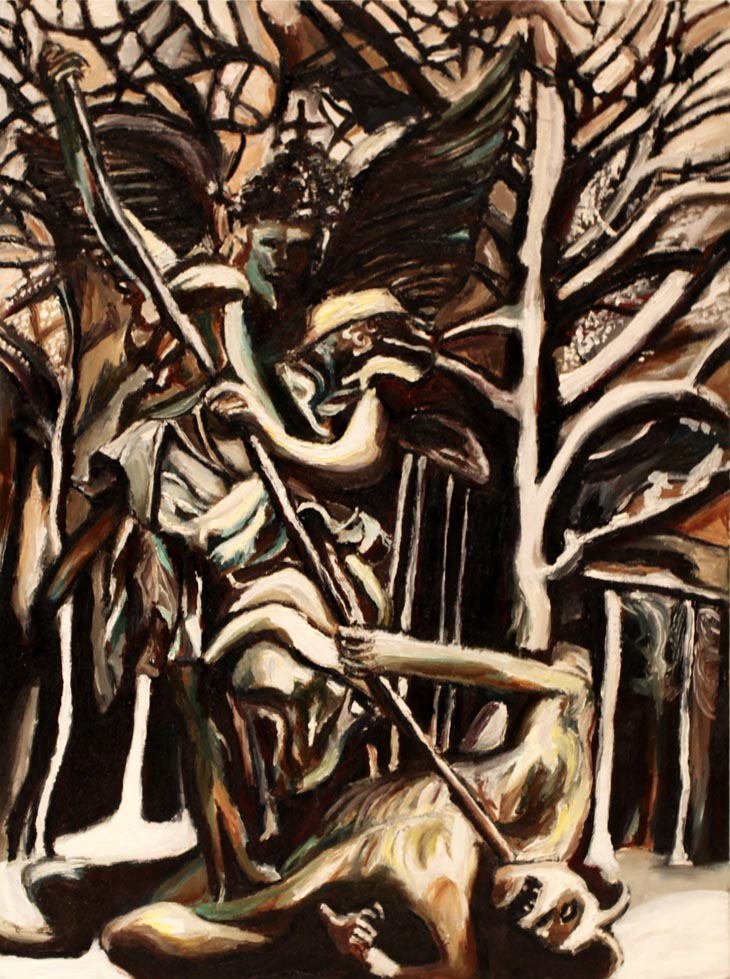
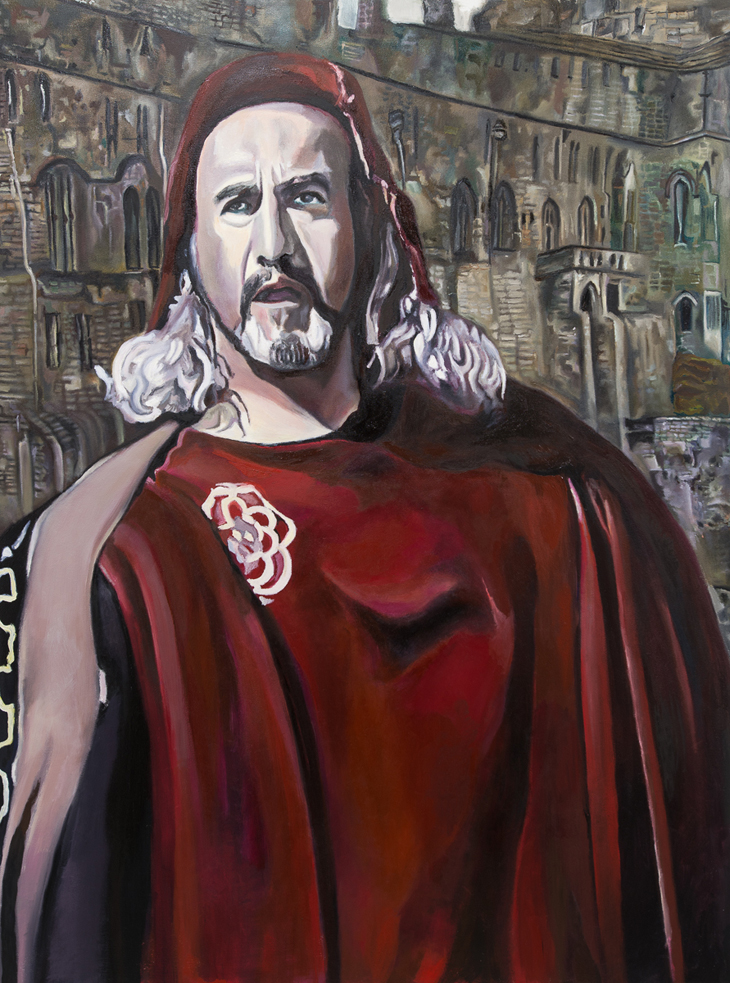

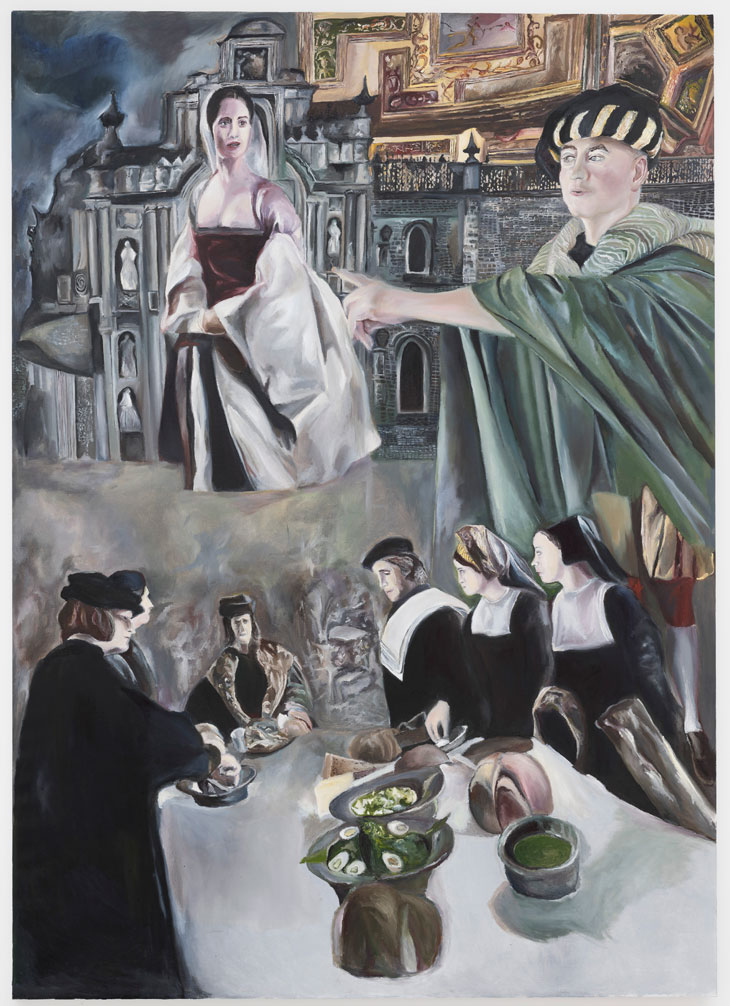
Nathan Cash Davidson
Text by Ben Street
And in Nobody Can Stop The Wooden Top Boy, a scene from a surreal fairy tale written by the artist, a stag half-grimaces, half-grins at a stern older woman appearing by a waterfall: that sheepish, secretly delighted smile epitomises the gleeful picaresque of Davidson’s painted world.
There’s a joyous abundance in Davidson’s paintings, a delight in the historical anachronism of the act of painting. In Angelic Fever, St Michael slams the Devil in the neck with a bendy pole, while a thicket of branches in the background (culled from an image found online of a snow-capped wood) struggles for pictorial supremacy. Disregarding pictorial niceties (anatomical accuracy, compositional logic, tonal consistency) means Davidson’s painting is invested with the immediacy of a story told by an excited child: words tumble out, in whatever order they happen to appear.
Henry VIII strides out of the painting, his unwieldy gold chain glittering, his eyes staring glassily ahead, a severed female head held aloft behind him, and seems to intone the title of the painting itself - So It Is Decreed And So It Shall Be Done. If the title seems a bit too extravagantly theatrical to be genuine Tudor, it’s because it is: Henry’s dead eyes and tumbling jowls are those of his Madame Tussauds mannequin, painted by Nathan Cash Davidson in a style of semi-detached sarcasm. In Davidson’s paintings, historical and imagined narratives are told as though half-heard, half-understood, but the space in his works is conversely overstuffed, both gesturally and pictorially, like the dummy Henry with his enormous shoulders.





